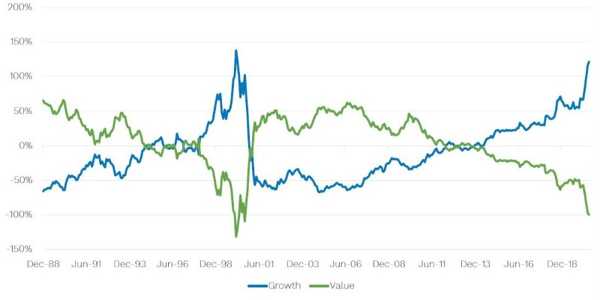Growth Vs Value Stocks What Are The Differences And Benefits
In the world of investing, two primary categories of stocks often dominate discussions: growth stocks and value stocks. Both have distinct characteristics, risks, and benefits that attract different types of investors. While growth stocks promise significant potential for future earnings, value stocks provide a more stable, often undervalued, entry point for conservative investors. In this article, we will break down the key differences between these two types of stocks and discuss their unique advantages, risks, and investment strategies in 2025.
What Are Growth Stocks?
Growth stocks represent companies that are expected to grow their earnings at an above-average rate compared to other companies in the market. These stocks tend to be found in industries that are expanding rapidly, such as technology, healthcare, and consumer goods. Growth stocks do not typically pay dividends, as companies reinvest profits back into the business to fuel expansion.

The primary appeal of growth stocks lies in their potential for significant capital appreciation. Investors in growth stocks are betting that the company will experience rapid growth in revenue and profits, leading to higher stock prices.
What Are Value Stocks?
On the other hand, value stocks are shares of companies that are considered undervalued compared to their intrinsic value. These stocks are often found in industries that are more established and stable, such as utilities, manufacturing, or financial services. Value stocks typically trade at a lower P/E ratio, which means they are priced lower relative to their earnings. This lower valuation often occurs because the market perceives these companies as underperforming or facing temporary challenges.

Investors who buy value stocks believe that the market has mispriced the stock, and over time, the market will correct itself, leading to price appreciation. Unlike growth stocks, value stocks often pay dividends, providing investors with a steady income stream.
Key Differences Between Growth And Value Stocks
While growth and value stocks share the same basic concept—ownership in a company—they differ significantly in terms of risk, return potential, and investment approach.
Risk And Volatility
Growth stocks tend to be more volatile than value stocks. Due to their high price-to-earnings ratios and the optimistic expectations surrounding their future growth, they can experience significant price swings. This volatility can be both a blessing and a curse for investors. On one hand, growth stocks have the potential for massive returns if the company meets or exceeds its growth targets. On the other hand, if the company fails to deliver, the stock price can drop sharply, leaving investors with losses.
Potential For Returns
Growth stocks are all about future potential. Investors in growth stocks are willing to pay a premium for the chance to participate in a company's expansion. These stocks can experience dramatic price increases when the company’s growth exceeds expectations. However, there is a high level of risk involved, as future growth is never guaranteed. The returns on growth stocks can be substantial during periods of market optimism, but they can also be disappointing if the expected growth does not materialize.
Benefits Of Growth Stocks
Growth stocks offer several distinct benefits, particularly for investors who are looking for capital appreciation. The primary advantage of growth stocks is their potential for high returns. In an economy with rapid technological advancements or increasing consumer demand, growth companies can see their earnings expand significantly, leading to substantial stock price increases.

Another benefit of growth stocks is their ability to outperform during bull markets. When the market is in an expansion phase, growth stocks tend to thrive as investors are willing to pay higher premiums for companies with high growth prospects. Additionally, since growth companies are often in innovative industries, there can be opportunities for investors to be part of cutting-edge technologies or disruptive market trends.
Benefits Of Value Stocks
The benefits of value stocks revolve around their stability and undervaluation. Since these stocks are typically priced lower than their intrinsic value, they offer a margin of safety for investors. Even if the stock's price drops temporarily, value investors believe the market will eventually recognize the company's true worth.

Another benefit of value stocks is the potential for consistent dividend income. Many value stocks pay dividends, which can provide a steady stream of income for investors. This makes value stocks appealing to income-focused investors who rely on dividends as part of their investment strategy.
Growth Stocks In 2025
In 2025, growth stocks remain attractive to investors looking to capitalize on technological advancements and innovation. The rise of artificial intelligence, electric vehicles, renewable energy, and biotechnology has created opportunities for growth companies in these sectors. Investors are excited about the potential of companies that are leading in these areas, with the expectation that they will experience rapid expansion in the years to come.

However, 2024 also presents some challenges for growth stocks. Rising interest rates and concerns about inflation have made the high valuations of growth stocks less appealing to some investors. As borrowing costs increase, growth companies may struggle to finance expansion or meet earnings targets. This has led to increased caution among growth stock investors, and many are reassessing their portfolios in light of broader economic concerns.
Value Stocks In 2025
Value stocks have also seen renewed interest in 2025 as investors seek safer, more stable investments amid economic uncertainty. As the market continues to experience volatility, many investors are turning to value stocks as a way to mitigate risk. These stocks, often found in more traditional industries, are perceived as offering a solid foundation during times of market turbulence.
The strong dividends offered by many value stocks also make them appealing in a low-yield environment. As central banks raise interest rates, bonds and other fixed-income assets become more attractive, but value stocks still provide an opportunity for income-focused investors. Additionally, many value stocks are trading at attractive price levels due to temporary market setbacks, presenting opportunities for investors to buy low.
Conclusion
In 2024, the debate between growth and value stocks continues to shape investment strategies. Growth stocks offer significant upside potential but come with high volatility and risks. These stocks are ideal for investors with a long-term horizon and a tolerance for risk.
In contrast, value stocks provide a safer, more stable option for those seeking reliable returns and income through dividends. While growth stocks have the potential to outperform during periods of economic expansion, value stocks offer the benefit of being undervalued, with the market likely to recognize their true worth over time.





